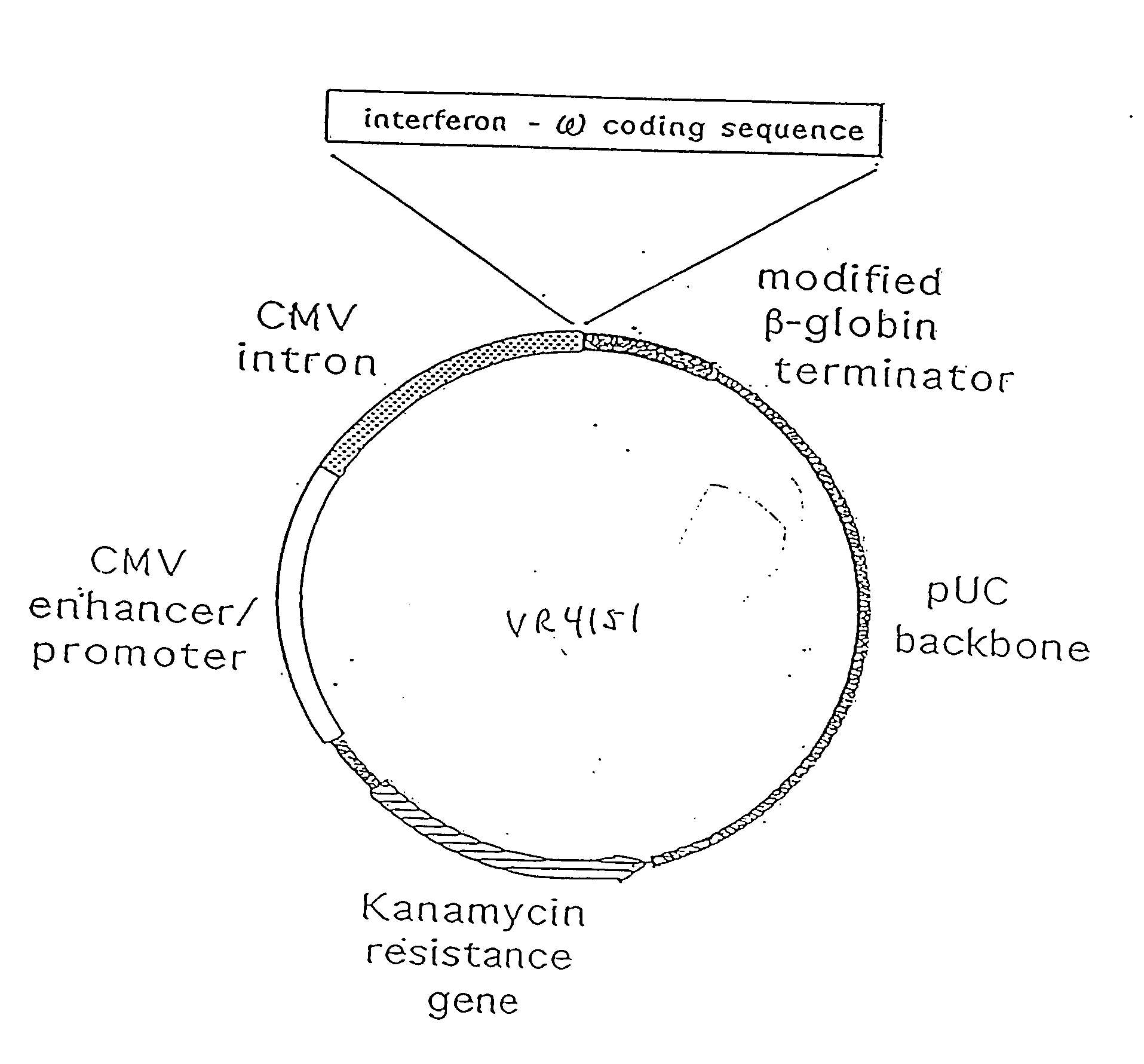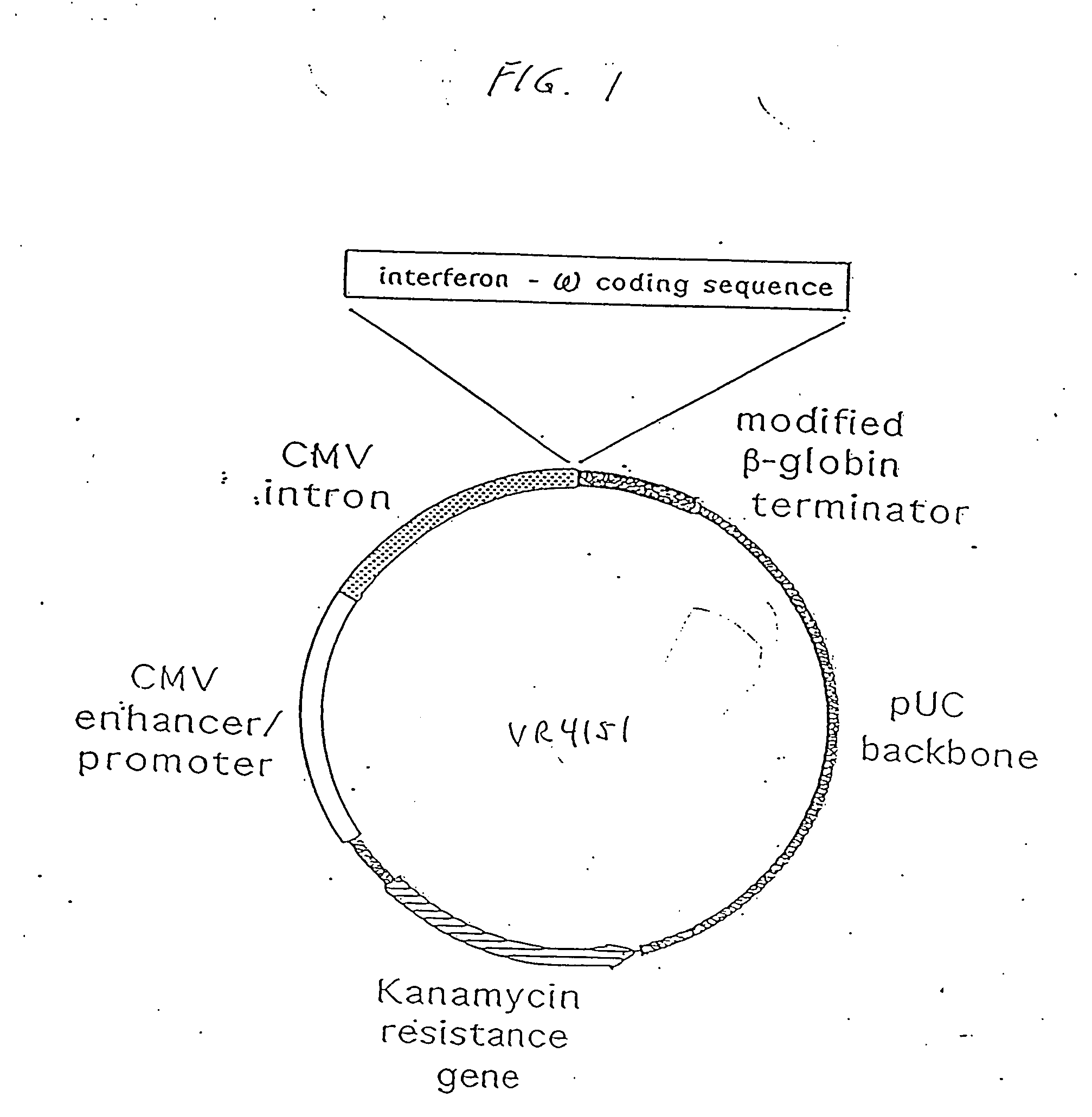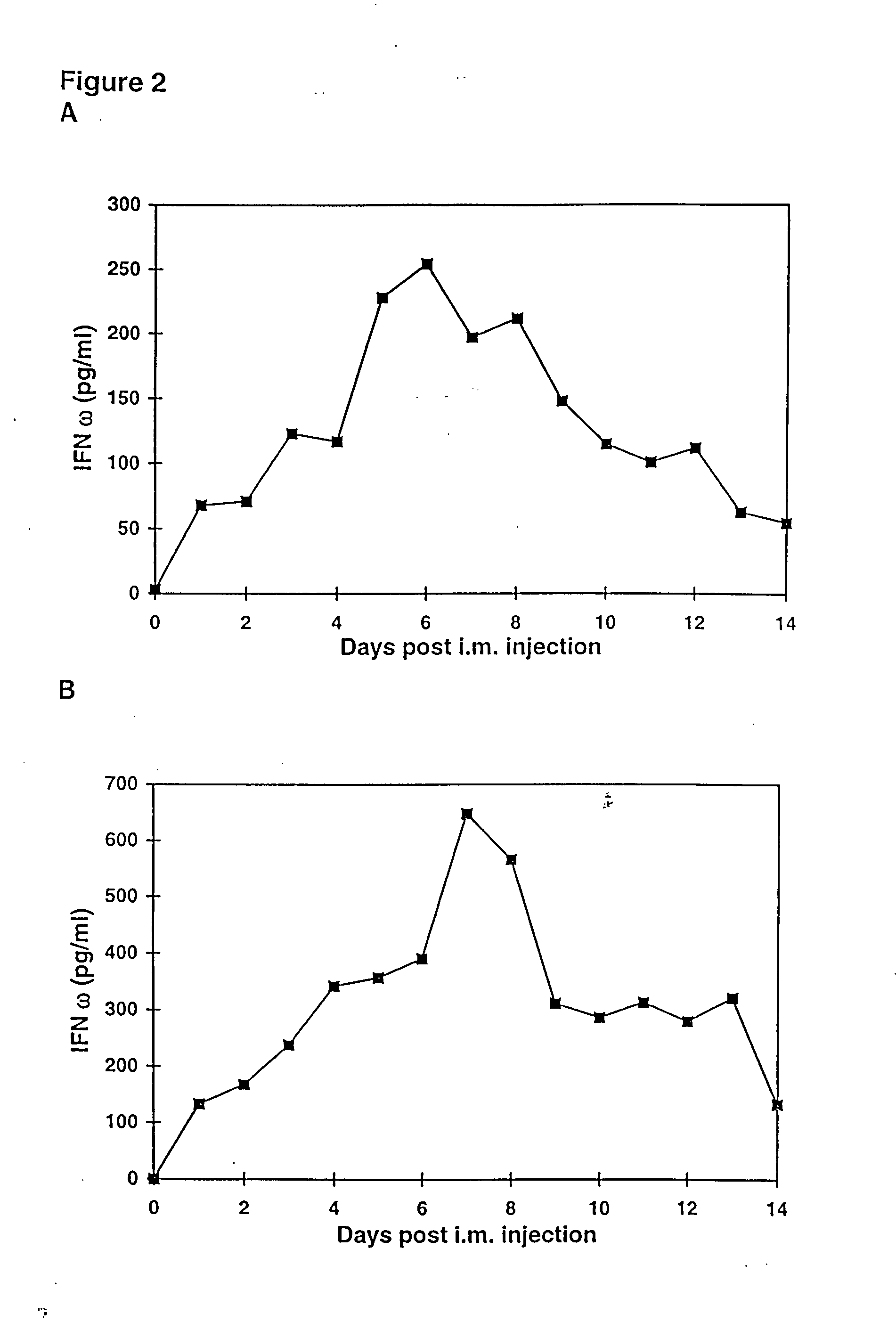Treatment of cancer using cytokine-expressing polynucleotides and compositions therefor
a technology of cytokine and polynucleotide, which is applied in the field of mammals cancer treatment, can solve the problems of non-specific immune response, effective treatment options, and disruption of essential host genes or activation of oncogenes, and achieve the effect of improving in vivo polypeptide expression
- Summary
- Abstract
- Description
- Claims
- Application Information
AI Technical Summary
Benefits of technology
Problems solved by technology
Method used
Image
Examples
example 1
Construction of Expression Vectors
[0271] Three basic eukaryotic expression plasmid vectors, termed VR1012, VR1055 and VR1033 were used in the construction of all plasmids used in the following examples. The blank plasmids, VR1012 and VR1055 differ only in transcriptional termination sequences. The backbone of both plasmids is derived from pUC19, with the beta-lactamase (ampicillin resistance) gene replaced by the aminoglycoside acetyltransferase (kanamycin resistance) gene from pET9a (Novagen, Madison, Wis.). Both plasmids direct eukaryotic gene expression from a cassette containing the human cytomegalovirus immediate early I (CMV IE) gene promoter / enhancer, CMV IE 5′ untranslated (UT) sequence, and intron A. Following these regulatory elements is a cloning polylinker for insertion of polypeptide coding sequences. Following the polylinker in VR1012 is the 3′ UT sequence from the bovine growth hormone gene for polyadenylation and transcriptional termination. In VR1055, the transcrip...
example 2
Purification of pDNA
[0281] pDNA was transformed into Escherichia coli DH10B-competent cells and grown in Terrific Broth (Sambrook, J. et al., in: Molecular Cloning. A laboratory manual, Cold Spring Harbor Laboratory Press, Cold Spring Harbor, N.Y., p. A.2 (1989)) complemented with 50 μg / ml kanamycin in a 1 Liter shaker flask. Cells were harvested by centrifugation at the end of the exponential growth phase (approximately 16 hr), typically yielding 10 grams of biomass net weight per liter. Covalently closed circular pDNA was isolated by a modified lysis procedure (Horn, N. A. et al., Human Gene Therapy 6: 565-573 (1995)) followed by standard double CsCl-ethidium bromide gradient ultracentrifugation with an average yield of approximately 5 mg per liter. Plasmids were ethanol precipitated and resolubilized in saline at 4° C. and dialyzed against saline. Endotoxin content was determined by the Limulus Amebocyte Lysate assay (Associates of Cape Cod, Inc., Falmouth, Mass.). All plasmid p...
example 3
In Vitro Evaluation of Biological Activity of IFNω and IFNα
[0282] To assure that the interferon plasmid DNA used in the following examples encoded biologically active interferon, cell proliferation and antiviral assays were performed. All culture medium used in this and following examples was obtained from Life Technologies (Gaithersburg, Md.), and all serum was obtained from HyClone (Logan, Utah).
[0283] UM449 cells (American Type Culture Collection, Rockville, Md.) were plated at a concentration of 2×105 cells per well in a 6 well plate and incubated for 24 hours. Plasmid DNA and the lipid, DMRIE / DOPE (1:1) were each diluted to a concentration of 1 mg in 0.5 ml Optimem medium (Life Technologies, Gaithersburg, Md.). The lipid DMRIE / DOPE consists of the cationic lipid (±)-N-(2-hydroxyethyl)-N,N-dimethyl-2,3-bis(tetradecyloxy)-1-propanaminium bromide (DMRIE) and the neutral lipid dioleoylphosphatidylethanolamine (DOPE) at a 1:1 mol:mol ratio (Feigner et al., J. Biol. Chem. 269:2550-2...
PUM
| Property | Measurement | Unit |
|---|---|---|
| molar concentration | aaaaa | aaaaa |
| molar concentration | aaaaa | aaaaa |
| mass ratio | aaaaa | aaaaa |
Abstract
Description
Claims
Application Information
 Login to View More
Login to View More - R&D
- Intellectual Property
- Life Sciences
- Materials
- Tech Scout
- Unparalleled Data Quality
- Higher Quality Content
- 60% Fewer Hallucinations
Browse by: Latest US Patents, China's latest patents, Technical Efficacy Thesaurus, Application Domain, Technology Topic, Popular Technical Reports.
© 2025 PatSnap. All rights reserved.Legal|Privacy policy|Modern Slavery Act Transparency Statement|Sitemap|About US| Contact US: help@patsnap.com



